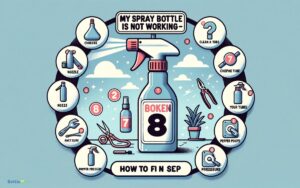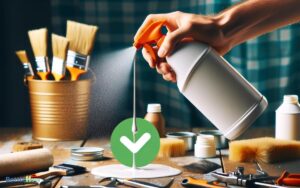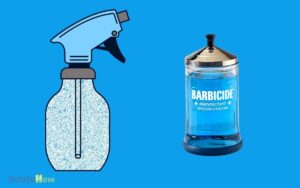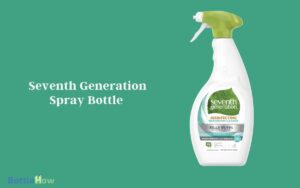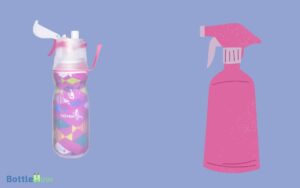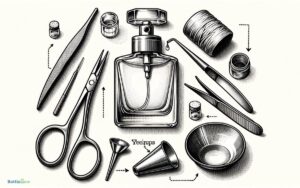Bleach to Water Ratio in Spray Bottle: Expert Tips!
To create a disinfecting solution using bleach in a spray bottle, you’ll need to carefully measure and mix the correct ratio of bleach to water.
For general household disinfection, a standard ratio is 1/3 cup of bleach per gallon of water. This guarantees the solution is strong enough to kill germs without damaging surfaces or posing health risks.
Always mix in a well-ventilated area while wearing protective gear such as gloves and goggles to protect yourself.
Also, use cold water to prevent the release of chlorine gas. Exploring further safety precautions and applications could enhance your disinfecting practices.
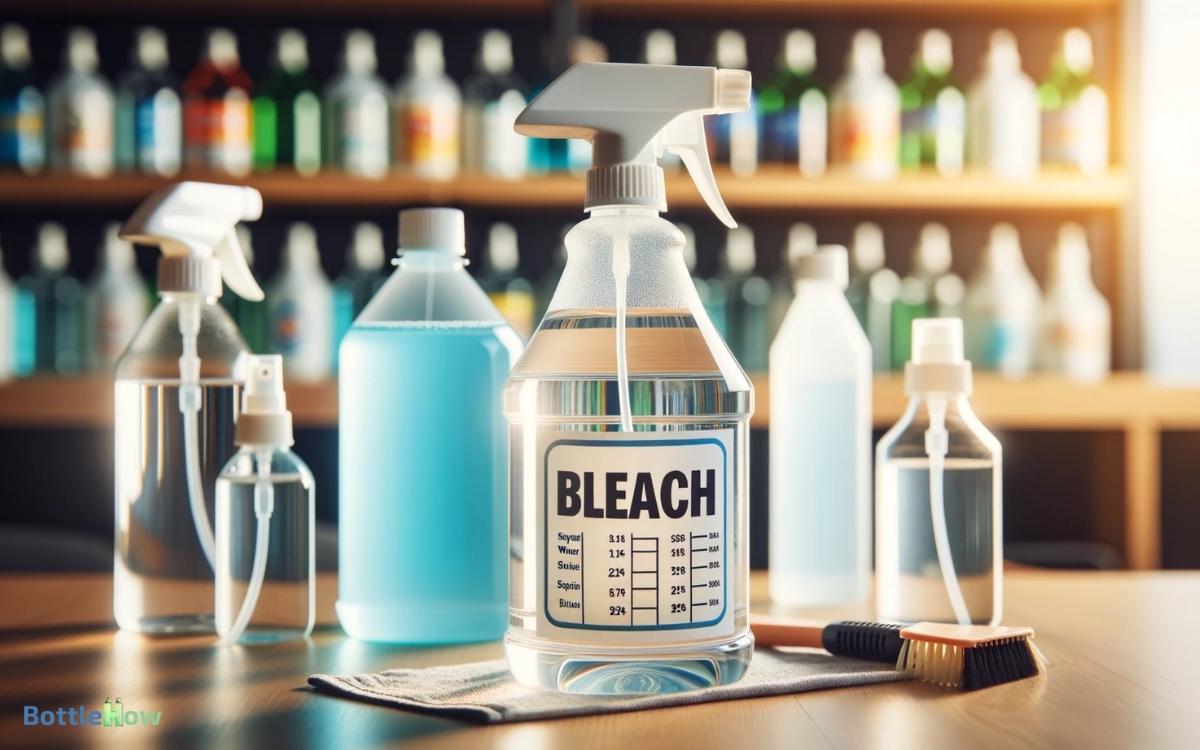
Key Takeaways
Understanding Bleach Concentrations
Why should you care about bleach concentrations when preparing a cleaning solution? It’s vital because using the correct bleach concentration guarantees effective disinfection without damaging surfaces or fading colors.
Too strong a solution can be unnecessarily harsh, causing wear and discoloration over time. Conversely, a too-diluted mix may not effectively eliminate germs, leading to a false sense of security and potential health risks.
To serve others well, it’s important to strike the right balance. Typically, a standard disinfecting solution requires about one-third cup of regular bleach per gallon of water. Always check the bleach label, as concentrations can vary.
Accurate measurements uphold safety standards and ensure the well-being of those you’re helping to keep environments clean and sanitary.
Safety Precautions for Mixing
After making sure you’ve measured your bleach concentration correctly, it’s vital to focus on the safety precautions for mixing.
Always blend bleach in a well-ventilated area to avoid inhaling fumes, which can be harmful to your respiratory system. It’s essential to wear protective gear such as gloves and goggles to shield your skin and eyes from splashes.
Never mix bleach with ammonia or other cleaners; this can release toxic gases that are hazardous to your health.
Additionally, make sure you’re using cold water, as hot water can cause the bleach to decompose and release chlorine gas.
Tools and Materials Needed
To begin preparing your bleach solution, you’ll need a clean spray bottle, precise measuring tools, and personal protective equipment such as gloves and goggles.
Guarantee the spray bottle is thoroughly cleaned and free from any previous chemicals to avoid unwanted reactions.
You’ll need measuring cups or spoons that offer clear markings to accurately measure the bleach and water.
It’s essential to use gloves to protect your hands from harsh chemicals and goggles to safeguard your eyes from splashes. Additionally, consider a mask if you’re sensitive to fumes.
This preparation will enable you to serve safely and effectively, ensuring the wellbeing of yourself and those around you while maintaining a clean and sanitized environment.
Step-by-Step Mixing Guide
Now that you’ve gathered your tools and materials, it’s important to focus on how you’ll mix your bleach solution safely and effectively.
First, you’ll need to make sure you’re using the right type of bleach; not all bleach is suitable for every cleaning task.
Next, measuring the bleach and water precisely is key to achieving the correct dilution and ensuring effectiveness while maintaining safety.
Selecting Proper Bleach Type
Selecting the appropriate type of bleach is important for ensuring the effectiveness and safety of your cleaning solution.
You’ll want to use regular, unscented bleach for your cleaning tasks. This type typically contains 5-6% sodium hypochlorite, which is ideal for disinfection.
Avoid using color-safe or scented bleaches, as they’ve additives that may not be suitable for all surfaces and could leave residues. Also, make sure the bleach hasn’t passed its expiration date, as older bleach can be less effective.
It’s essential for the safety of those you serve to check that the bleach is intended for disinfection and not just for whitening clothes.
Proper selection can make a significant difference in the quality and safety of your cleaning practices.
Measuring Ingredients Accurately
Accurately measuring the ingredients is crucial for preparing an effective and safe bleach solution. You’ll need to start by identifying the correct volume of water for your specific need.
For most household disinfection tasks, one gallon of water serves as the base. Next, carefully read the bleach label to determine the appropriate amount to add. Typically, for standard disinfection, it’s about one-third cup of bleach per gallon of water.
Use a measuring cup dedicated solely to bleach use to avoid cross-contamination. Pour the bleach slowly into the water, not the other way around, to reduce splashes.
Always use room temperature water, as hot or cold water can alter the effectiveness of the solution. Double-check your measurements to make sure accuracy before mixing.
Safe Mixing Practices
For your safety while mixing bleach, always wear protective gloves and eyewear before you begin. Make sure you’re in a well-ventilated area to avoid inhaling fumes.
Start by filling your spray bottle with the required amount of water first, then slowly add the bleach.
Pouring bleach directly into an empty bottle can cause dangerous splashes. Stir gently to mix the solution without causing spills.
Never mix bleach with ammonia or other cleaners as this can release toxic gases. After mixing, label your bottle clearly with the contents and the date of mixing.
This way, you’re not only safeguarding yourself but also those who may use the cleaning solution after you.
Ratios for Different Surfaces
When you’re cleaning different surfaces around your home, it’s important to adjust the bleach to water ratio accordingly to guarantee safety and effectiveness.
For kitchen countertops, a milder solution can be effective, whereas bathroom surfaces might require a stronger mix due to higher bacteria levels.
Always check the compatibility of bleach with outdoor materials to avoid damage while trying to sanitize.
Kitchen Countertops Ratio
To effectively disinfect kitchen countertops, use a bleach to water ratio of 1:50, ensuring safe and thorough cleaning of these surfaces.
This specific concentration is ideal for eliminating germs without harming most countertop materials. It’s important to wear gloves while handling bleach solutions and make sure your space is well-ventilated.
After applying the bleach solution, let it sit for at least one minute before wiping it down with a clean, damp cloth. This contact time is necessary to kill bacteria and viruses effectively.
Always test the solution on a small, inconspicuous area first to avoid any damage. Remember, you’re not just cleaning; you’re maintaining a safe and sanitary environment for everyone who uses the kitchen.
Bathroom Surfaces Mix
Different bathroom surfaces require specific bleach to water ratios to guarantee effective disinfection without causing damage.
Here’s how you can make sure you’re using the right concentrations:
- Porcelain Tiles: Mix a ratio of 1 tablespoon of bleach with 1 gallon of water. This dilution is strong enough to kill germs but gentle enough to preserve the finish of your tiles.
- Shower Curtains: Use 1 part bleach to 4 parts water. This helps remove mold and mildew without weakening the material.
- Plastic Bathtubs: A ratio of 1 part bleach to 10 parts water is advisable. It’s effective for disinfection while safeguarding the bathtub’s surface from potential bleach damage.
Outdoor Areas Solution
Now let’s focus on the appropriate bleach-to-water ratios for disinfecting various outdoor surfaces effectively.
For hard, non-porous surfaces like tiles or concrete, a ratio of 1 cup of bleach per gallon of water will do the trick.
This solution should be used cautiously; always wear gloves and make sure the area is well-ventilated.
When you’re dealing with wooden decks or furniture, you’ll want to use a milder solution to prevent damage.
A ratio of 1/3 cup bleach per gallon of water is recommended. Apply the solution gently using a spray bottle and rinse the surfaces thoroughly after 10 minutes to avoid any potential discoloration or damage.
Application Techniques
Spraying your surfaces evenly with the bleach solution guarantees maximum coverage and effectiveness.
To make sure you’re applying it correctly and safely, consider these key techniques:
- Maintain Distance: Hold the spray bottle about 6-8 inches away from the surface. This distance helps in applying a fine mist rather than a direct stream, which can lead to uneven application and unnecessary wastage.
- Consistent Motion: Move the bottle in a steady, back-and-forth motion to cover the area thoroughly without over-saturating any part. This method helps achieve an even distribution of the solution.
- Immediate Wiping: After spraying, gently wipe the surface with a clean cloth. This step removes any excess bleach and avoids potential damage or discoloration.
These steps will help you serve your environment effectively and safely.
Storage and Shelf Life
To guarantee the effectiveness and safety of your bleach solution, it’s vital to store it properly and understand its shelf life.
You should keep the mixed solution in a cool, dark place, as light and heat can degrade the bleach’s potency.
It’s also important to use a clean, opaque spray bottle to prevent contamination and light exposure.
Ideally, label the bottle with the mix date, as diluted bleach solutions should be used within 24 hours for maximum effectiveness. After this period, the solution begins to break down, reducing its disinfectant properties.
Always make sure the storage area is inaccessible to children and pets to prevent accidental exposure.
Proper storage practices safeguard both the solution’s strength and the health of those you’re helping.
Troubleshooting Common Issues
If you encounter issues with your bleach spray solution, it’s important to pinpoint the problem quickly and accurately.
Here are some common issues you might face:
- Ineffective Cleaning: If the solution isn’t cleaning as expected, check if the bleach has degraded due to prolonged storage or exposure to heat and sunlight. You might need to mix a fresh batch.
- Strong Odor or Irritation: This could indicate too much bleach in your mixture. It’s vital to adhere strictly to recommended ratios to avoid overpowering fumes and potential health risks.
- Nozzle Clogging: Sometimes, undissolved particles can block the spray bottle’s nozzle. Always make sure the bleach is fully dissolved in water before filling the spray bottle.
Addressing these issues promptly ensures your efforts in sanitation are both safe and effective.
Benefits of Proper Dilution
Ensuring your bleach is properly diluted not only maximizes its effectiveness but also minimizes risks to your health and safety.
When you’re aiming to serve others by maintaining a clean and safe environment, understanding the correct bleach-to-water ratio is vital.
A precise mixture ensures that the bleach is strong enough to disinfect surfaces effectively without causing damage or leaving harmful residues. This balance protects sensitive materials and extends the life of everyday objects.
Additionally, a well-diluted bleach solution reduces the emission of harsh fumes, which can be particularly beneficial in enclosed spaces or areas with poor ventilation.
By carefully preparing your bleach spray, you’re showing a commitment to the well-being of everyone who uses the space.
Conclusion
To sum up, diligently mixing bleach with the correct water ratio is vital for effective disinfection without risking your health or property.
Always double-check the bleach’s concentration before diluting, as different types demand varying amounts of water.
Keep your mix fresh; it usually loses potency after 24 hours. By accurately measuring and applying the solution, you’ll maximize safety and efficacy, debunking myths of its indestructibility and ensuring a cleaner, safer environment.

